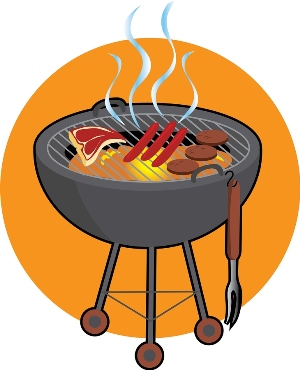 People love their pets and many treat them more like children than animals. If you have a dog, the summer months are the perfect time to take it with you on vacation, to the beach or to the park. Here’s how to protect your dog from summer heat, whether in the backyard or away from home.
People love their pets and many treat them more like children than animals. If you have a dog, the summer months are the perfect time to take it with you on vacation, to the beach or to the park. Here’s how to protect your dog from summer heat, whether in the backyard or away from home.
Even though dogs are such an important part of our lives, it’s amazing how many people forget that dogs don’t sweat. They can’t cool down as efficiently as we can. So it’s important to be aware of the potential dangers of your dog developing ‘heat stroke’ during the warmer months.
Think about the breed of dog you own. If they have a heavy coat, dark coat, or have narrow nasal passages like Pekingese, Bulldogs, Boxers or Pugs, they may be more susceptible to heat. Dogs which have health problems may also be more predisposed to overheating.
When the temperatures soar, bring the dog out of the heat and into the air conditioning. If they must be outdoors, provide them with clean, cool water and a place to get out of the sun’s rays. The best course of action is to bring them in so they can cool down.
You may take your dog with you on trips during the summer. This is a great idea, but dogs can’t always go where you go. If this is the case, take your dog home or someplace they’ll be safe. Never leave your dog unattended in a closed car. Even if you leave windows open, the car can potentially heat up to over 120 degrees Fahrenheit in a short period of time. Your dog simply cannot survive in that temperature.
Move your dog off of hot surfaces like concrete or asphalt. These surfaces can burn your dog’s paw pads because they retain heat. Instead walk your dog during the early morning or late evening hours when the surfaces have had an opportunity to cool down some. Better yet, walk your dog on grass.
Purchase veterinarian-approved sunscreen for dogs with white muzzles or ears. White Pit Bulls, Shar Peis and some types of Chihuahuas may need this. Even though dogs have fur to protect their skin, they can still get sunburned if their fur is light or sparse.
Recognize the signs of heat stroke. Watch for heavy panting, noisy or difficult breathing, and tacky saliva. If you’re concerned that your dog may be experiencing heat stroke, seek medical help from a qualified veterinarian. They will be able to check the dog’s temperature and treat them accordingly.
You may think shaving your pet is one way of protecting them from summer heat. Actually, their fur serves a purpose even in the heat. Instead, follow the tips above to keep your dog safe during the summer. These ideas will give you the information you need to keep your dog cool so you can enjoy its company for years to come.










